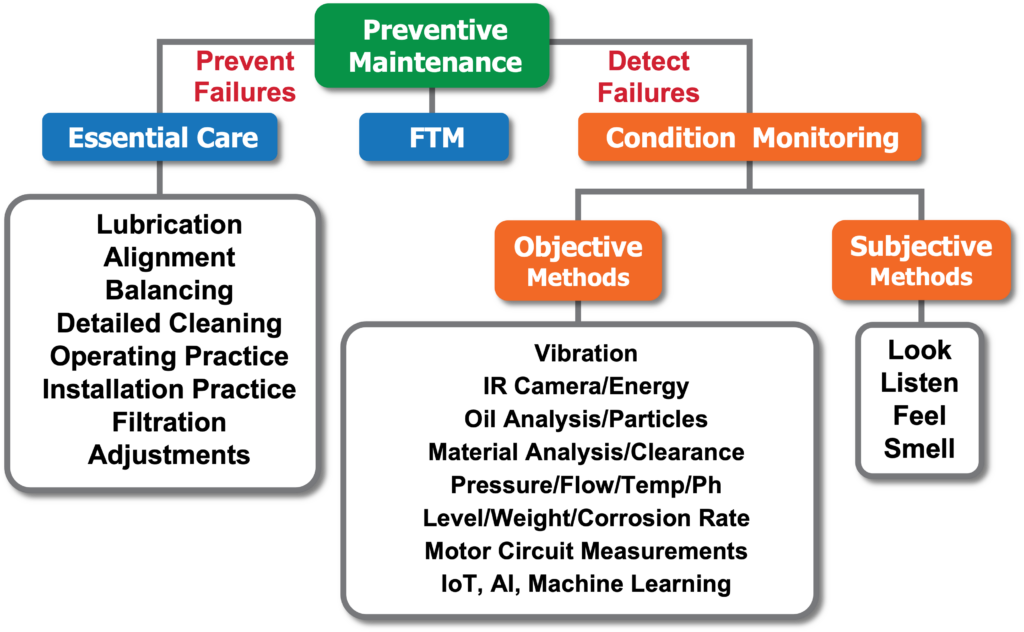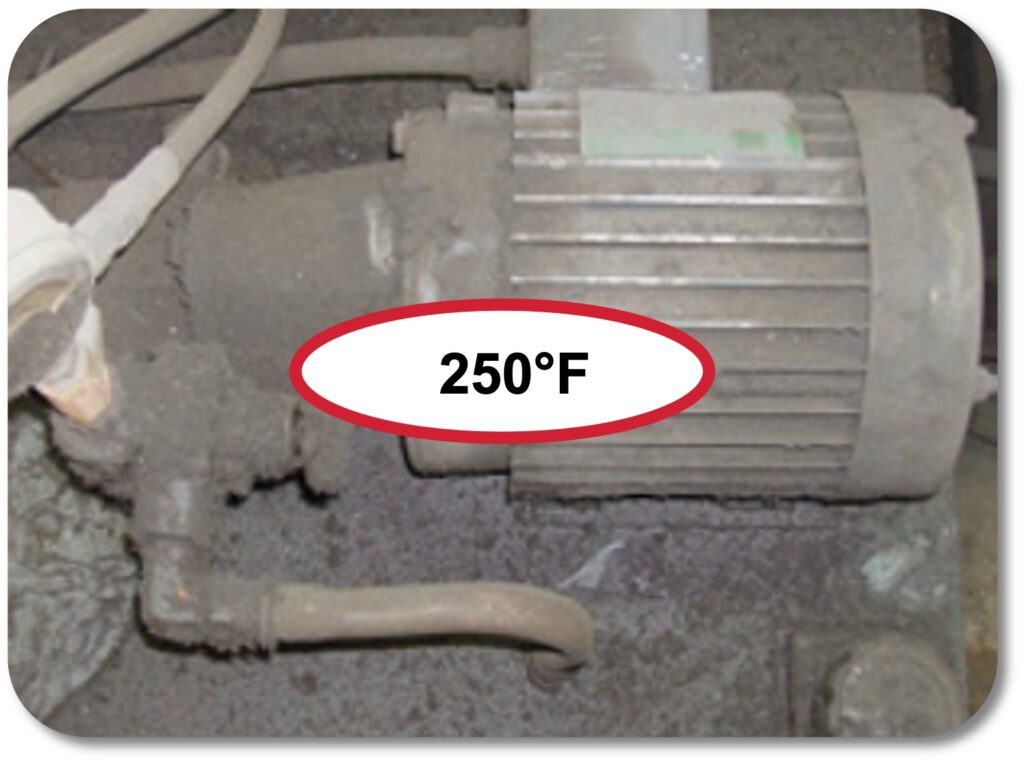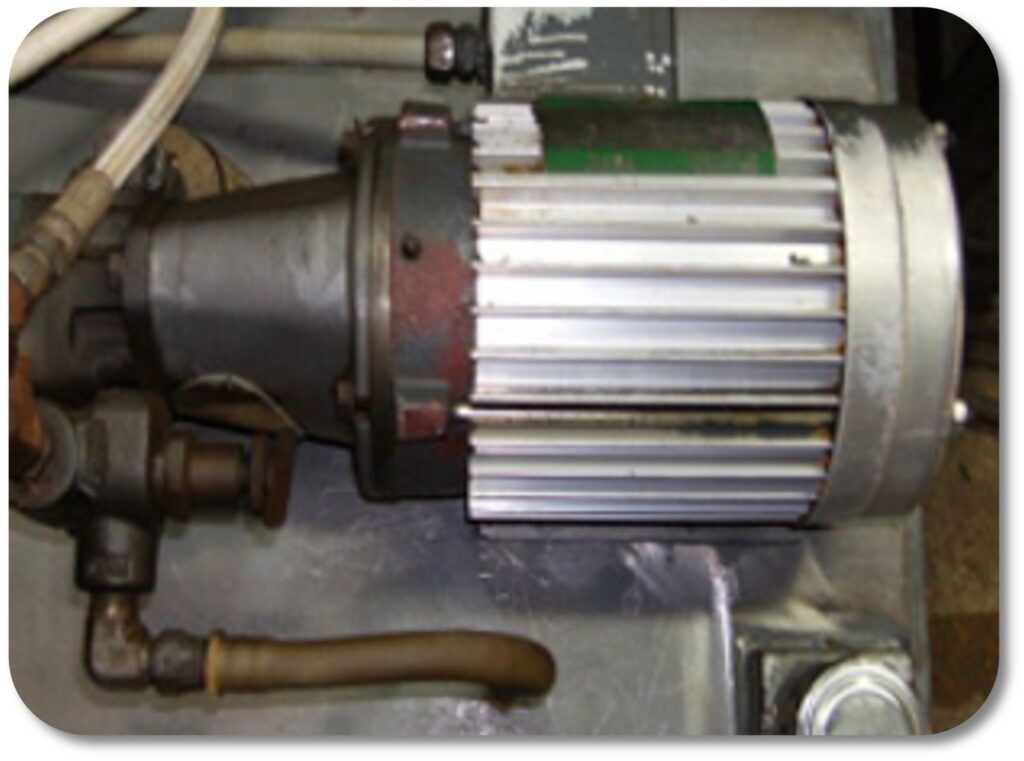Torbjörn Idhammar, President IDCON INC
Documenting Cost-Effective Maintenance Tasks
IDCON’s latest series will detail the correct way to document cost-effective maintenance tasks. The first thing to do is go back to the basics. Part 1 will cover the background and theory of how to achieve the correct tasks and documenting Preventive Maintenance tasks.
IDCON’s Definition of Preventive Maintenance
You may be thinking “I already know what PM is!” There are many different definitions floating around, so IDCON has developed its own simple but thorough definition:
All actions that prevent a failure from happening, or that detect the failure early.

What are the Different Parts of Preventive Maintenance?
IDCON breaks down Preventive Maintenance into three parts: Essential Care, Fixed Time Maintenance (FTM), and Condition Monitoring (CM). Essential Care and FTM fall under the category of “Prevent Failures” while Condition Monitoring pertains to “Detect Failures.”
Essential Care
Essential Care includes tasks that can prevent failures in equipment such as lubrication, alignment of shafts, detailed cleaning of equipment, etc. It can also include operating practices. This includes how the equipment is being operated, installation practices, torque, filtration of air, water, and lubricants (among others)—all of these directly impact the life of equipment. The level of quality at which these tasks are performed can either prolong or shorten equipment life.
Fixed Time Maintenance
Fixed Time Maintenance can be used only if the life of equipment or a component is known. For example, the felt roll on a paper machine should be changed out every six weeks because the life of the felt roll is known to be roughly six weeks. Fixed Time Maintenance can be cost effective, but most often it isn’t because the life of the equipment or component is unknown.

Drag and hoist wire ropes are another example where Fixed Time Maintenance can be used.

FTM can be applied outside of the job as well, for the drive belt in your car.

Condition Monitoring
The goal of Condition Monitoring (CM) is to detect failures early through inspections. It is also known as “Predictive Maintenance” but at IDCON we prefer Condition Monitoring because it has a broader definition.
Condition Monitoring inspections can be either subjective or objective. Subjective equipment inspections refer to using your senses – look, listen, feel, smell. Objective inspections include tools used to measure conditions, for example, vibration analysis, temperature readings (including infrared), pressure measurement, etc.
Click to learn more about how often you should perform condition monitoring inspections.
Failure vs. Breakdown
The goal of Preventive Maintenance is to prevent failures or find failures early, and by extension avoid equipment breaking down. What is the difference between a failure and a breakdown? A failure can be defined as an unacceptable condition. A breakdown occurs when the equipment stops functioning. Let’s use an electric motor as an example to show the distinction. Figure 1 shows an electric motor that is dirty and overheated at 250°F, but still running. Operating to Breakdown (OTB) is usually less cost effective than Fixed Time Maintenance and Condition Monitoring.


The motor running at such a high temperature is an unacceptable condition. Detailed cleaning of the motor will lower the temperature and keep the engine functional. If it is not cleaned and the running temperature is not lowered, it could lead to a breakdown (no longer functioning). In Figure 2, the electric motor has been cleaned and is running at a safe temperature.
Note: Repetitive vs. Non-Repetitive Preventive Maintenance Tasks
Included in the definition of Preventive Maintenance, there are certain tasks to perform on equipment or components that will not be repeated – and therefore shouldn’t be a part of the Preventive Maintenance Program.
Examples include actions taken during installation such as alignment and balancing. Vibration, a PM task, indicates if equipment is out of alignment, so there is no reason to realign without first doing a vibration analysis. Read about how errors during the installation process can cause problems in your equipment over time (such as shortening bearing life).
So, non-repetitive tasks are included in the definition of Preventive Maintenance, they just aren’t part of the repetitive actions that make up a Preventive Maintenance program.
Check out our Youtube Channel to watch Tor’s video related to this article.
Torbjörn Idhammar is president and CEO of IDCON, Inc. and section editor, Reliability & Maintenance, for Paper360° magazine. Contact him at [email protected]. For more articles, please visit: www.idcon.com and www.maintenanceworld.com.
 Paper 360
Paper 360